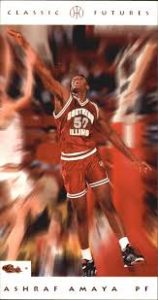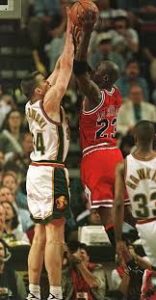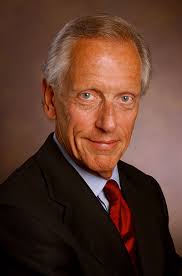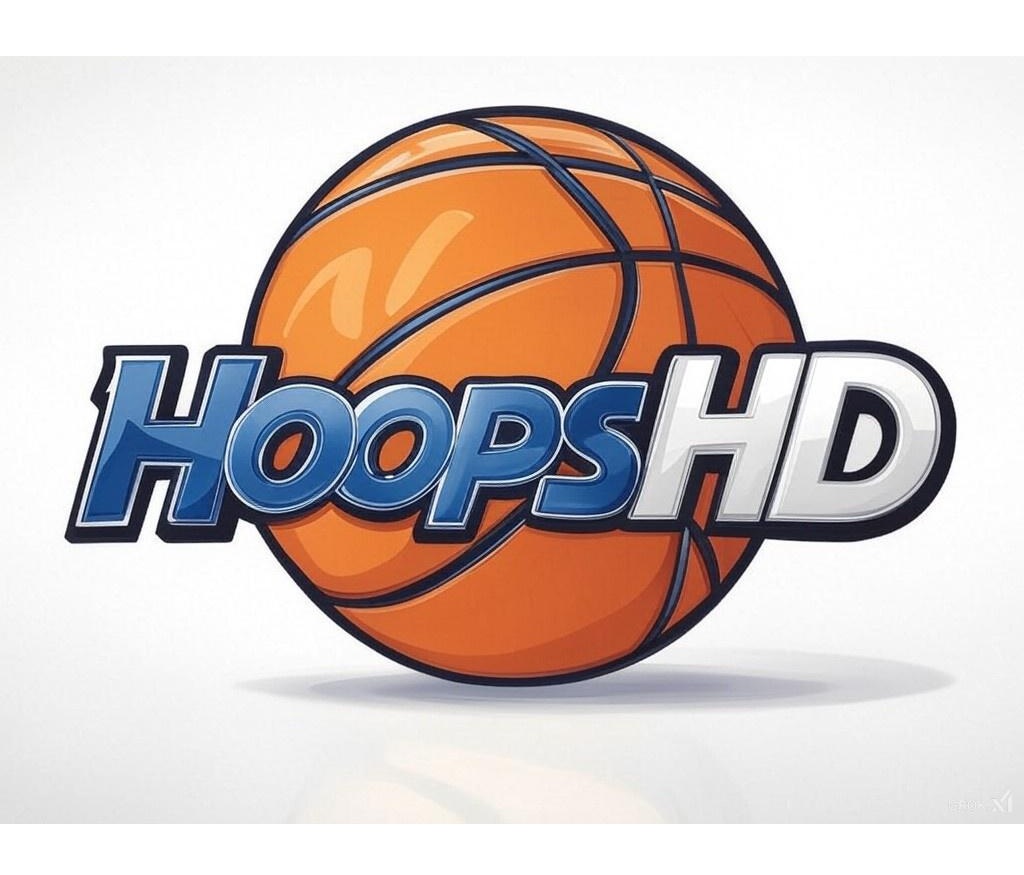The NBA Finals date back to 1947 (when they were known as the Basketball Association of America Finals) and the very 1st NCAA tourney was held in 1939. Olympic basketball competition is even older: it debuted as a demonstration event in 1904 and the men’s version became a medal sport in 1936, with the women finally getting their chance to go for the gold in 1976. The United States has dominated Olympic basketball competition from the start: the men have won 15 gold medals in the 18 tournaments they have participated in during the past 84 years, while the women have won 8 gold medals in the 10 tournaments in which they have competed during the past 44 years. Those of you who were looking forward to the 2020 Olympics opening ceremonies in Tokyo on July 24, 2020 will have to wait an extra 364 days, as the coronavirus caused a postponement until July 23, 2021. Due to the absence of college basketball since mid-March, HoopsHD’s Jon Teitel decided to fill the void by trying to interview as many prior Olympic players/coaches as possible so that you have something to read this summer while not watching the Summer Games. We commence our coverage by chatting with Linda Hargrove about competing in the hurdles at the 1968 US Olympic Trials and winning a bronze medal in 1992: today marks the 20th anniversary of her coaching the Portland Fire to its 1st win in franchise history.
You were the national high school record holder in the hurdles in 1967 and competed in the hurdles at the 1968 US Olympic Trials in Los Angeles: how did you get into track and field, and how close did you come to making it to Mexico City? There were very few opportunities for girls in any sport in Kansas in the 1950s/1960s. In junior high our county (Cowley County) held a 1-day play day where all the kids in the county got together to compete in track and field events. It was during this time that I found out I could outrun anyone (boy or girl) in my county. My high school principal, Moon Stinson, took an interest in me and taught me how to run the hurdles. During this time I was also taking baton lessons and my teacher’s father, Loyd Boren, saw something special in me and wanted to work with me on the long jump. We ended up organizing a girls’ club track team (the Stridettes!) and began competing across the state during the summer. I won many events and after the Topeka Cosmopolitan Track Club picked me up I began competing on a national level in 1965. I competed in most big events across the country over the next 3 years but did not make the finals in the Olympic Trials. Some of the high schools started including girls in their track meets. I did not know about the national high school record that I set in 1967 (my junior year) until I was a freshman in college. Coach Stinson called me to let me know after he saw my name in a record book: things were not very organized back then. My goal as an athlete was to be an Olympian: when that dream died in 1968 I could have never guessed that 24 years later I would become an Olympian, but this time as a coach and not an athlete.
You created the women’s basketball program at Cowley Community College in 1972 and proceeded to win 11 of 12 league championships: what was the hardest part of getting the program off the ground, and how were you able to dominate right from the start? Cowley president Dr. Gwen Nelson asked me to come there and create the women’s basketball program. As a student at Cowley from 1968-1970, Dr. Nelson had seen me recruit/organize a track team. I told him at the time that I did not know much about basketball but he indicated that he recognized how competitive/organized I was and thought that I would do a great job. I ended up coaching volleyball/basketball/track/tennis/softball. I also was the cheerleading sponsor and director of admission at Cowley during my 17 years there. The state of Kansas was located in Region 6 of the NJCAA and during my last several years at Cowley I was also the Region 6 Director, where I organized all of the Region 6 tournaments for the 22 junior college teams in Kansas. When I first started we did not have a place to practice or uniforms or transportation or players or much competition. There were few schools who had women’s teams at that time. Title IX had just been passed and our president was very progressive and wanted to get going. I did not feel like we were really successful until I was able to get my sister (Debbie Adams) to come play for me at Cowley. She helped set the bar for the success that we enjoyed over many years. She came back to Cowley and was my assistant coach for many years and ended up taking over the volleyball team for me. Kansas was way behind Oklahoma in providing opportunities for girls’ basketball teams so I tried to recruit players out of Oklahoma. They were still playing the 6-on-6 half-court game but their players were really skilled. The toughest part was finding competition and girls who wanted to play. We practiced in a city recreation center or our campus gym during the noon hour. I would drive a van to our games and try to motivate our players to work hard and be competitive. I loved trying to build something special and at the time I did not really see obstacles: just opportunities.
In addition to your duties as basketball coach you also coached volleyball/women’s track and field/softball, served as Director of Admissions/Intramurals, and were a cheerleading sponsor: how were you able to wear so many different hats all at once? During this time I also had 2 children, finished my bachelors/masters degrees, and taught classes. My husband/kids became very involved in the recruiting process and would come to games with me most nights. My son’s favorite song was the National Anthem: he always wanted to get to the games in time to hear it! My daughter picked the cheerleaders she liked best and would cheer for that team. My husband Ed was a high school/college athlete and just loved watching games so it became very much of a family affair for us.
You graduated magna cum laude from Southwestern College in 1975 and got a master’s degree from Wichita State in 1985: how much importance do you place on academics? I have always believed strongly in education. I was the first member of my family to get a college degree and my sister Sue became Dr. Sue Woodworth before recently retiring as a university professor. My sister Debbie retired after teaching at Cowley College for over 30 years and my brother Dale is a high school superintendent at the high school that we all graduated from (Udall High School).
In 1987 you were named NJCAA national COY: what did it mean to you to receive such an outstanding honor? This was a really wonderful honor for me. It was voted on by the junior college coaches across the country and I had the opportunity to address about 1000 coaches at the Coach of the Year banquet during the Women’s Final 4 in Austin, TX. It was definitely one of the highlights of my career.
You were an assistant coach for team USA at the 1992 Olympics: what did it mean to you to represent your country, and what did it mean to you to win a bronze medal? As a young girl I dreamed of going to the Olympics and representing the USA so this felt like a dream realized for me. I had been coaching for USA Basketball for several years but it was not until we won a gold medal at the World Championships in Malaysia that the dream of becoming an Olympian started to realistically take shape. Working with most of the best players/coaches in the world was so special. We traveled with the Dream Team, stayed in the Olympic Village in an apartment on the Mediterranean Sea, and participated in the opening ceremonies. We were in a beautiful city (Barcelona) and tried to soak up the culture of the Olympics and Spain. It was a bit of a distraction being with the Dream Team: they were the best basketball team ever assembled and we felt like we had to fight to get any recognition. I remember USA Basketball created a t-shirt that said “Little girls dream too” which had pictures of all of the players. We were always trying to answer questions about why we were in the Village while the men were in a hotel: people perceived that we were being treated differently than the men’s team. I never felt that personally: we wanted to live in the Village but the men (especially Michael Jordan) were celebrities. They needed to have their privacy somewhat protected but I do believe that it was a distraction for our team and contributed to our 3rd-place finish. Not winning the gold medal was a huge disappointment. The Eastern bloc countries consolidated and formed a Unified team. They were good but I felt that we did not play our best.
You spent several years as a WNBA head coach/GM/scout in Portland/Washington: what is the biggest difference between pro basketball and college basketball? The biggest difference is recruiting. In the pros you need to evaluate players just like in college, but now you have to try to figure out which players will be taken before you make your pick and target the players that you have a chance to draft. As a GM, I also spent so much time trying to figure out how to make our team stronger, whether it was through the draft or trades or managing the salary cap, which were all things that I did not have to worry about as a college coach. At the pro level everyone is really motivated to be the best but managing egos is a little more challenging. I really loved both levels of basketball. The pro level is much tougher physically because you play so many more games in a compact time frame. An injury to a key player can really have a devastating effect on your success since they do not have a lot of time to recover between games.
Your husband Ed is 1 of the best softball coaches in the country and was inducted into the NJCAA Softball Hall of Fame in 2007: who is the best softball player in the family, and who is the best coach?! It depends on who you ask! We were very different as players: Ed was a power-hitter and had a really strong arm, while I was a really fast runner and had a good glove. We both made many all-star/all-state teams but I made All-American in a national tournament in 1978 so I would give the edge to me: haha!! In his defense, he was coaching all of the teams that I played on. He has the better overall win-loss record as a coach so I guess that he would be considered the better coach. I have always said that while it is tough being a coach, it is tougher still to be married to a coach…and we each did both of those things for 30+ years. Over the years we have learned when to be there to offer support and when to give some space, but the main thing is that we always, always knew that we had each other’s back.
You have hosted the ProHoops Combine for the past 11 years, which allows pro basketball executives to evaluate incoming talent: how did you come up with the idea, and how difficult was the decision to cancel it last April due to the coronavirus? When I retired in 2008 I had several WNBA GMs/coaches ask me to run a combine before the draft. The WNBA used to run a combine and as a coach/GM myself I would rely on that event to help solidify my thoughts about the draft/free agency. Jessie Kenlaw, my long-time assistant in Colorado/Portland/Washington, and I decided to provide this opportunity for players/decision makers in pro basketball. It started off pretty small but has grown into the premier combine at the Women’s Final 4. Last year we had over 50 foreign coaches/agents as well as the WNBA coaches/GMs on hand to evaluate about 90 players. It has turned into a great opportunity for everyone involved. It was tough to cancel the event in New Orleans this year but once the NCAA cancelled the Final 4 we knew that the decision makers would not be there. The thing that sets the ProHoops Combine apart from others is the involvement of all the decision makers in women’s pro basketball being there to evaluate players in person. We have invited all of the players who planned to participate this year to our 2021 event in San Antonio so I hope that they will get the exposure they need next spring.
In 2007 you were inducted into the Kansas Sports Hall of Fame: when people look back on your career, how do you want to be remembered the most? The induction to the Kansas Sports Hall of Fame was really huge for me. To grow up in the state and then be recognized in that way was a very humbling experience. I went in the same year as Jackie Stiles/Darren Dreifort so that made it even more special. I hope people remember me as someone who put family first and loved to compete/work hard.







